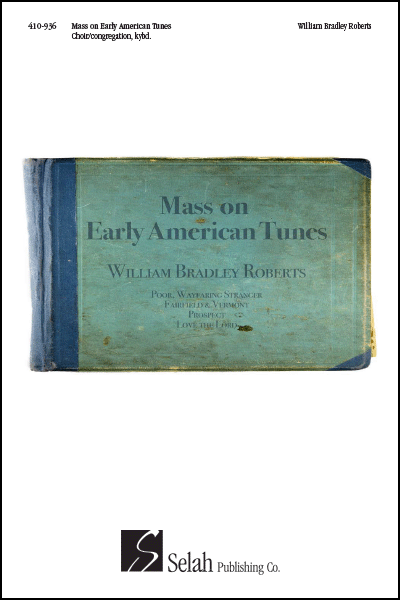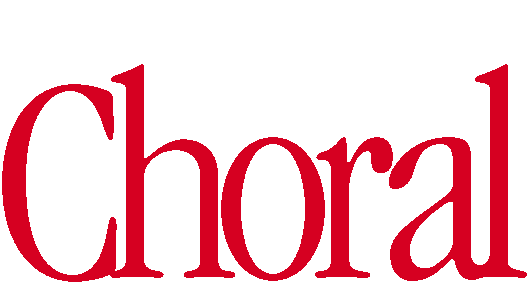|
Composer
William Bradley Roberts
Text Kyrie, Gloria, Sanctus, Agnus Dei
Voicing Unison, opt. choral Amen and descant
Topic Settings of the Mass
Price $2.75 (U.S.)
Released 12/22
Cat. no. 410-936
Difficulty Easy
|
Order now!
Order PDF download!
Min. of 3
Description
Commissioned by Virginia Theological Seminary in Alexandria, Virginia, for the 200th anniversary of its founding in 1823. Movements use five different early American tunes for the melodies, and include a short introduction for each. Settings are idiomatic yet fresh, and will withstand repeated use for a season with your congregation.
Download congregational parts
These melodies may be reproduced in service leaflets provided licensing is secured through Selah Publishing Co., or by using your CCLI or OneLicense agreements. Please note that all credits must be included when using any of these movements.
Download Zip folder with movements provided individually in PDF, Tiff, PNG, or JPG formats.
|
|


Review
"Roberts takes five tunes drawn from collections like The Sacred Harp and Southern Harmony to weave a satisfying congregational mass with the most typical movements. The familiar musical language ensures that the melodies feel familiar even upon the first hearing, and singing congregations would have little trouble learning these movements. The spare keyboard accompaniments furnish ample musical interest without obscuring the melody, which is omnipresent in the top line of the accompaniment. Suggested choral pitches for the final cadence of the Gloria and descants for the last phrases of the Sanctus and the Agnus Dei invite some choral elaboration for what is otherwise a unison setting." --AAM Journal, Jan/Feb 2025
From the composer
When approached by the Very Rev. Ian S. Markham, President of Virginia Theological Seminary, and the Rev. Dr. J. Barney Hawkins IV, Vice President for Development at VTS about composing a mass for the bicentennial of the school, I was still on faculty there. Subsequent retirement offered abundant time for writing and composing, and so I resolved to spend as long as necessary on the project. Early in the process I felt led to base the composition on early American hymn tunes from the shape note tradition. This seemed appropriate since these tunes are roughly contemporaneous with the founding of the Seminary. Indeed, some of them might well have been sung in the first chapel on campus. Others followed in the immediate decades after the school’s founding. This historical resonance seemed exactly right, because it linked the celebration of the 200th year with the history of the country, particularly the American South where these tunes predominated. I consulted The Sacred Harp, the most famous of the shape note hymnals, as well as Southern Harmony, Kentucky Harmony, and Virginia Harmony. It was a challenge to find metrical tunes that would work with the prose texts of the Mass; the tunes follow poetic meters, having, therefore, an adopted number of syllables per line, while the text of the Mass (though poetic in a general sense) is written in a free, prose style.
Though the harmonic palette of this Mass is modern (mildly so), I decided to incorporate certain aspects of shape note hymnody. These tunes have rather quirky personalities, often breaking the traditional rules of harmony and voice leading. As frequently happens, the slight oddities of the hymns' compositional style have become much beloved by shape note singers and musicologists alike. No one today would dare "correct" these hymn tunes, because, like an antique Persian carpet with worn places, we have come to value the oddities. For example, "parallel fifths"--moving from a fifth interval to another fifth interval--are forbidden in conventional harmony, but are frequent in shape note tunes. Likewise, "open fifths"--chords in which there is no third--have been eschewed since the time of Bach, but are prevalent in these old American tunes. The current Mass setting contains both parallel fifths and open fifths in homage to the style of the original hymns.
Folk music--by definition, tunes in which 1.) the composer is unknown, and 2.) the tune is subject to modification as it is handed down--is usually memorable and easy to sing. These hymn tunes have the nature of folk music of the U.S., even though we know some of the composers. In other cases, we know merely the last name of the composer, but nothing else about that person. Arguably the most famous tune in the Mass is POOR, WAYFARING STRANGER about whose origins we know little. The tune names are shown on each movement of the Mass, so that those who wish can return to the source material.
Congregational music must be singable by average singers, not perhaps on the first try, but at least after a few repetitions. Most shape note tunes were designed to be sung by average singers, who were trained to read the music not by the position of notes on the staff, but instead by the shape of the notehead, which could be square, round, triangular, or diamond shaped. To this day, especially in the American South, there are "Singin's," where people gather for "all day singing and dinner on the grounds" ("dinner" being the noon meal in southern tradition). We know that these tunes are successful and beloved, so that incorporating them into the Mass might make for confident, exuberant singing. The melodies have been slightly altered only when necessary to accommodate the texts, but in the end are largely faithful to the original tunes.
This prayer accompanies the introduction of Mass on Early American Tunes: that it might enrich the worship of God's people, causing them to sing fervently to their Maker.
--WBR, Richmond, July 2022 |



